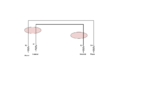kanmaedexandzelbladex
Member level 1
- Joined
- Jul 20, 2013
- Messages
- 35
- Helped
- 1
- Reputation
- 2
- Reaction score
- 1
- Trophy points
- 8
- Location
- Philippines
- Activity points
- 479
I was just wondering. I heard from somewhere that for some power supplies, it is important that there be no ripple and 'dips' in the output of a constant voltage output dc-dc converter. The specific cases are:
1.) When dynamic loading or hot swap testing, basically transient conditions it is not desirable for the output to have small negative dips or some oscillations even though they will eventually regulate at a fix value at steady-state.
2.) When the power supply is turned on, the output voltage must be monotonically increasing, if there is an upward spike which is small that is okay as long as there is no downward spike.
I heard that it depends on the load but is this really that important? Are there examples of load you could give which are really sensitive to these kinds of specs?
Also, I was wondering what if, if you apply a step increase in load, the output voltage of 5V dropped a little bit let's say 0.05V, becoming 4.95V and stayed there but it did not oscillate and it regulated there. Would that be better than if the step increase in load caused a downward dip of 0.05 and possible oscillation but in the end after some time to reduce the oscillation it regulated to 5V and not 4.95V. Which is better?
1.) When dynamic loading or hot swap testing, basically transient conditions it is not desirable for the output to have small negative dips or some oscillations even though they will eventually regulate at a fix value at steady-state.
2.) When the power supply is turned on, the output voltage must be monotonically increasing, if there is an upward spike which is small that is okay as long as there is no downward spike.
I heard that it depends on the load but is this really that important? Are there examples of load you could give which are really sensitive to these kinds of specs?
Also, I was wondering what if, if you apply a step increase in load, the output voltage of 5V dropped a little bit let's say 0.05V, becoming 4.95V and stayed there but it did not oscillate and it regulated there. Would that be better than if the step increase in load caused a downward dip of 0.05 and possible oscillation but in the end after some time to reduce the oscillation it regulated to 5V and not 4.95V. Which is better?
